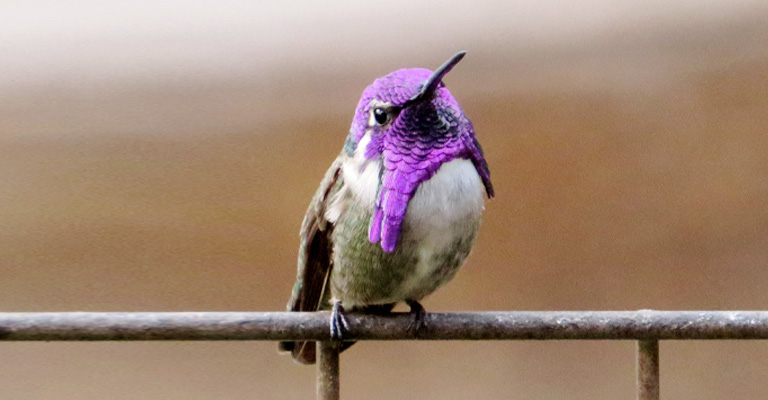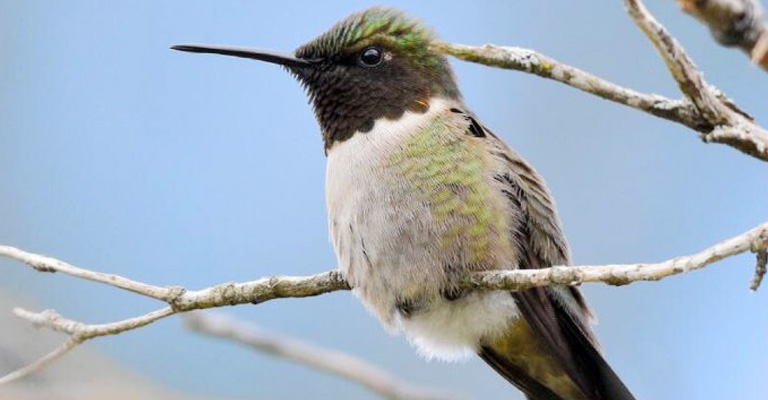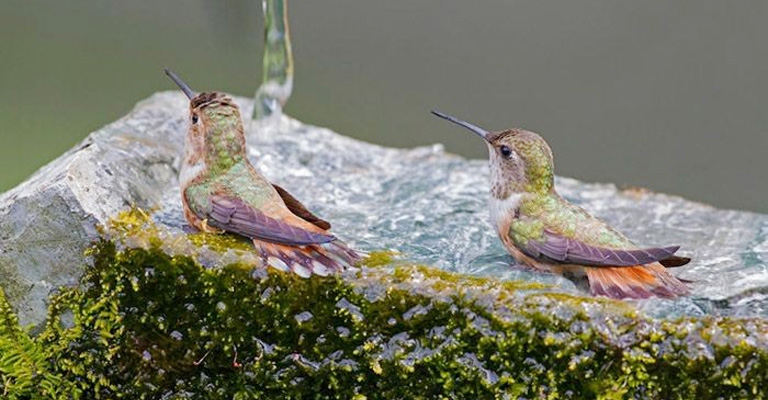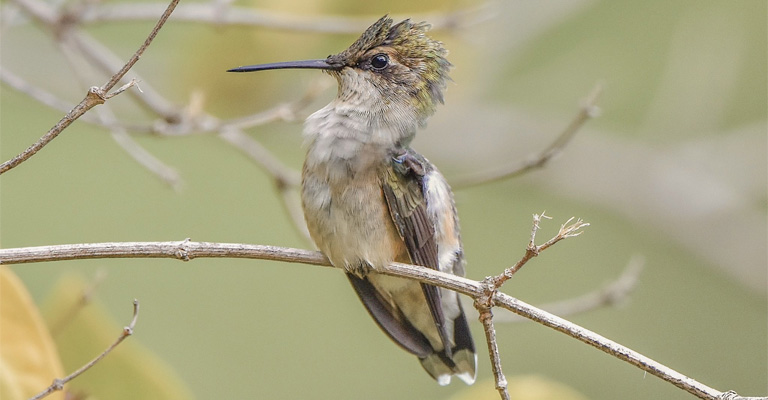Hummingbirds, those aerial acrobats of the bird world, are renowned for their dazzling plumage and remarkable migrations. But have you ever wondered if there’s a pattern to their departure when it comes to gender? In this exploration, we delve into ‘Do male hummingbirds migrate first – reasons’.
As the hummingbird world comes alive with the vibrant hues of spring and summer, these tiny avian marvels undertake some of the most extraordinary migrations in the bird kingdom.
While both male and female hummingbirds embark on these incredible journeys, there’s a curious debate surrounding whether males take the lead in migration.
Departing ahead of females may help males establish their territories and be in prime condition to court potential mates.
Join us as we uncover the fascinating reasons behind this phenomenon, shedding light on the gender dynamics of hummingbird migration and the mysteries of their remarkable travels.

Do Male Hummingbirds Migrate First: Reasons?
While both male and female hummingbirds undertake these incredible migrations, there’s a longstanding question that has intrigued ornithologists and bird enthusiasts alike: do male hummingbirds migrate first, and if so, why? Let’s explore!
The Fascination of Hummingbird Migrations
Before we delve into the question of whether male hummingbirds migrate first, it’s important to appreciate the magnitude of these migrations.
Hummingbirds are among the smallest birds on Earth, yet they undertake some of the most extraordinary journeys in the bird kingdom.
From the ruby-throated hummingbirds of North America to long-distance travelers like the rufous hummingbirds, these avian dynamos cover vast distances during their annual migrations.
The motivation behind these migrations is primarily related to changes in food availability and temperature.
As the seasons shift, hummingbirds follow the blooming of flowers and the emergence of insects, ensuring a steady supply of nectar and insects for nourishment. To do this, they must traverse continents and cross formidable geographic barriers.
The Timing of Migration
One of the intriguing aspects of hummingbird migrations is the timing of their departures. In temperate regions, where hummingbirds breed during the spring and summer, the onset of migration typically occurs in late summer or early fall.
However, the exact timing can vary among species and populations. The question arises when considering whether male hummingbirds leave for migration before their female counterparts.
While this phenomenon is often observed and documented, it’s essential to acknowledge that not all hummingbird species exhibit this pattern, and there can be variations within species.
Why Do Male Hummingbirds Migrate First?

Several factors contribute to the observation that male hummingbirds often initiate migration before females. These factors are interconnected and revolve around the dynamics of territory and reproduction:
Territorial Behavior
Male hummingbirds are known for their territorial nature. They vigorously defend feeding and nesting territories, which are essential for attracting mates and ensuring access to resources.
By migrating ahead of females, males have a competitive advantage in establishing and defending prime territories upon their arrival at the breeding grounds.
Timing and Breeding
For many hummingbird species, successful breeding is closely tied to the timing of their migrations. Arriving early at the breeding grounds allows males to secure the best nesting sites and establish dominance.
It also ensures that they are in prime condition for courtship and mating when females arrive.
Resource Availability
Timing is crucial for hummingbirds as they depend on nectar-rich flowers and insects for food. By migrating early, males can exploit the abundant resources available during the initial stages of spring and summer.
This early access to food is advantageous for building energy reserves and maintaining their health.
Attracting Mates
The presence of male hummingbirds at the breeding grounds ahead of females not only allows them to secure territory but also enables them to engage in courtship displays.
Males showcase their vibrant plumage and perform aerial displays to attract potential mates. Their early arrival increases their chances of successfully forming breeding pairs.
Is There Any Variability Among Species?

While the pattern of male hummingbirds migrating first is observed in many species, it’s essential to acknowledge that variations exist. Different hummingbird species exhibit diverse behaviors and migration patterns.
Some species may not follow the male-first pattern, while others may do so to varying degrees. For example, the ruby-throated hummingbird, one of the most well-studied species in North America, often sees males arriving at breeding grounds ahead of females.
In contrast, other species, such as Anna’s hummingbird, may exhibit more synchronized arrivals of males and females.
Tips for Observing Hummingbird Migration
Observing hummingbird migrations, particularly the arrival of males at breeding grounds, can be a rewarding experience for bird enthusiasts. Here are some tips for observing these remarkable journeys:
Keep Records
Maintain a birdwatching journal or log to record the arrival of hummingbirds in your area. Note the dates when you first observe male and female hummingbirds. This can help contribute to our understanding of local migration patterns.
Provide Food
If you have hummingbird feeders in your yard, ensure they are clean and filled with a sugar water solution (four parts water to one part sugar) during the migration season. Providing a food source can attract and nourish hummingbirds as they arrive.
Create a Hummingbird-Friendly Habitat
Plant nectar-rich flowers such as salvia, trumpet vine, and fuchsia in your garden to provide natural food sources for hummingbirds. A well-designed garden can attract and support these birds during migration.
Participate in Citizen Science
Consider contributing your hummingbird migration observations to citizen science projects and organizations that track bird migrations. Your data can help researchers understand hummingbird behaviors and population dynamics.
How Long Does It Take Hummingbirds to Migrate?

While hummingbirds are among the smallest birds on the planet, they embark on some of the most incredible journeys.
But how long does it take hummingbirds to complete these epic migrations, and what factors influence the duration of their flights?
Let’s delve into the fascinating world of hummingbird migrations to uncover the timelines and intricacies of their journeys.
The Variety of Hummingbird Species
To understand the duration of hummingbird migrations, it’s crucial to acknowledge the diversity of hummingbird species. There are over 300 species of hummingbirds, and each may have unique migration patterns, routes, and timing.
Short-Distance Migrations
Not all hummingbirds undertake long-distance migrations. Some species, like the Anna’s hummingbird, are considered non-migratory or short-distance migrators.
They stay in their breeding territories year-round, often residing in regions with relatively mild climates. For these species, the concept of migration as a long, arduous journey does not apply.
Long-Distance Migrations
The long-distance migratory hummingbirds, on the other hand, are the ones that capture our fascination. These birds breed in North America and migrate to Central America, Mexico, and even parts of South America for the winter.
Ruby-throated hummingbirds, rufous hummingbirds, and broad-tailed hummingbirds are some of the species known for their extensive migrations.
The Timing of Hummingbird Migrations
The timing of hummingbird migrations is closely linked to the changing seasons and the availability of food. As the seasons shift, so do the locations of hummingbirds.
They must time their journeys to coincide with the blooming of flowers and the emergence of insects, which provide their primary food sources.
What Is the Duration of Migration Flights?
The duration of hummingbird migration flights can vary widely depending on several factors:
Species
Different hummingbird species may migrate at different speeds. Some species may complete their migrations more quickly than others due to variations in their physiology and flight capabilities.
Distance
The length of the migration route plays a significant role in determining the duration of the journey. Hummingbirds that migrate shorter distances may complete their flights more rapidly than those traveling thousands of miles.
Stopovers
Hummingbirds often make stopovers during migration to rest and refuel. The duration of these stopovers can vary. Some hummingbirds may stay at a location for just a few hours, while others may rest for several days before resuming their journey.
Weather Conditions
Weather, including wind patterns and storms, can impact the speed and duration of migration flights. Favorable winds can aid hummingbirds in covering more ground quickly, while adverse weather can slow them down or force them to seek shelter.
Individual Variation
Within a species, individual hummingbirds may vary in their migration speeds and patterns. Factors such as age, health, and energy reserves can influence how quickly a bird completes its migration.
FAQs
How far do hummingbirds migrate?
The distance hummingbirds migrate varies depending on the species. Some species, like the ruby-throated hummingbird, may travel up to 2,000 miles from their breeding grounds in North America to their wintering grounds in Central America.
How do hummingbirds navigate during migration?
Hummingbirds use a combination of visual cues, instinct, and memory to navigate during migration. They are excellent at recognizing landmarks, such as mountains and bodies of water. They also rely on the position of the sun and the Earth’s magnetic field for orientation.
Do all hummingbirds migrate, or do some stay year-round in one location?
Not all hummingbirds migrate. Some hummingbird species, particularly those in mild climates, are considered non-migratory and remain in their breeding territories year-round.
Examples include Anna’s hummingbird on the west coast of North America.
Do hummingbirds migrate alone, or do they travel in flocks?
Hummingbirds can migrate individually or in loose groups, but they are not known for flocking behavior like some other bird species. Individuals may encounter other hummingbirds along the migration route and may feed alongside each other at stopover sites, but they typically maintain their own territories.
How do hummingbirds prepare for migration, and how do they refuel during the journey?
Hummingbirds prepare for migration by increasing their fat reserves, sometimes doubling their body weight. This extra fat serves as an energy source during the journey.
They feed extensively on nectar-rich flowers before departing and continue to seek out nectar sources during stopovers.
Conclusion
In the captivating world of hummingbird migrations, the question of whether male hummingbirds migrate first is a topic that continues to intrigue bird enthusiasts and researchers alike.
Male hummingbirds are known for their territorial behavior, and migrating earlier could provide them with a competitive edge in securing prime nesting sites upon their arrival.
However, it’s important to note that the exact timing of migration can vary among hummingbird species and populations. Factors such as environmental conditions, food availability, and individual readiness can influence the timing of migration for both males and females.
As we continue to unravel the mysteries of hummingbird migrations, it’s clear that these tiny birds never cease to amaze us with their remarkable behaviors and adaptations.
Whether it’s the males leading the way or a synchronized departure of both genders, hummingbird migrations remain a testament to the incredible feats that nature’s smallest creatures can accomplish.